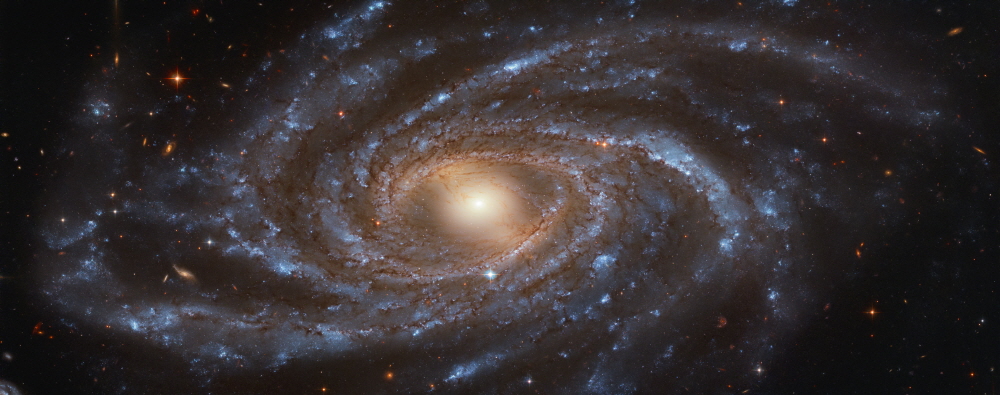
NGC 2336, a beautiful whirlpool galaxy captured by NASA’s Hubble Space Telescope. German astronomer Ernst Wilhelm Tempel discovered NGC 2336 in 1876 with a telescope with an aperture of only 28 cm. More than 100 years later, this image captured by the 2.4-meter Hubble, which now has 10 times the diameter of the main mirror, is full of detail and light unimaginable in the Tempel era.
NGC 2336 lies about 100 million light-years away in the constellation Camelopardalis. It consists of eight spirals and is 200,000 light-years across. Many old stars glow red in the central bulge, while the arms of the vortex glow blue with young stars enveloped in gas and dust.
On August 16, 1987, a supernova explosion was observed in NGC 2336, which was later discovered to be of type 1a and believed to be a white dwarf that exploded.
However, our galaxy is a spiral galaxy similar to NGC 2336. Barred spiral galaxies, to be precise, of course. It is 104,000 light-years across, only about half of NGC 2336, but the same place where the spiral arms shine in a beautiful curved blue color, where many stars gather in the center to form an expansion.
It is impossible to understand the full picture of the Milky Way from Earth. However, if it were possible to cross the Earth’s atmosphere, escape the solar system, run through interstellar space, pass through a few galaxies, and out of our own Milky Way galaxy, a glowing Milky Way image like this image taken by Hubble here may be spreading across the field of view. Related information can be found here.

